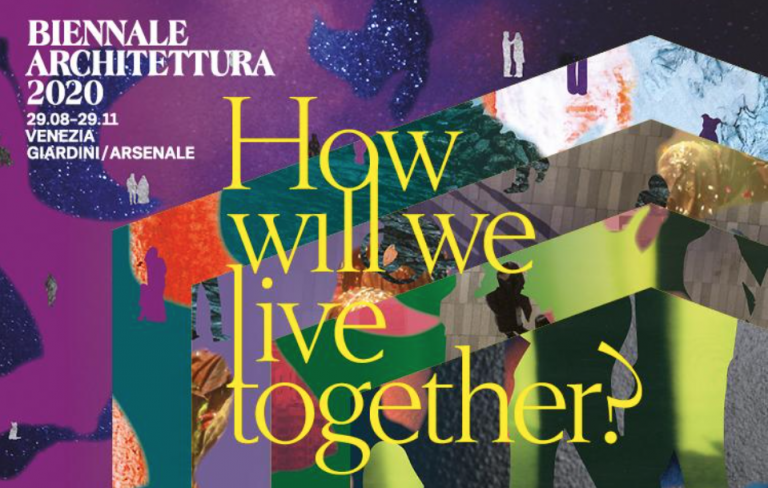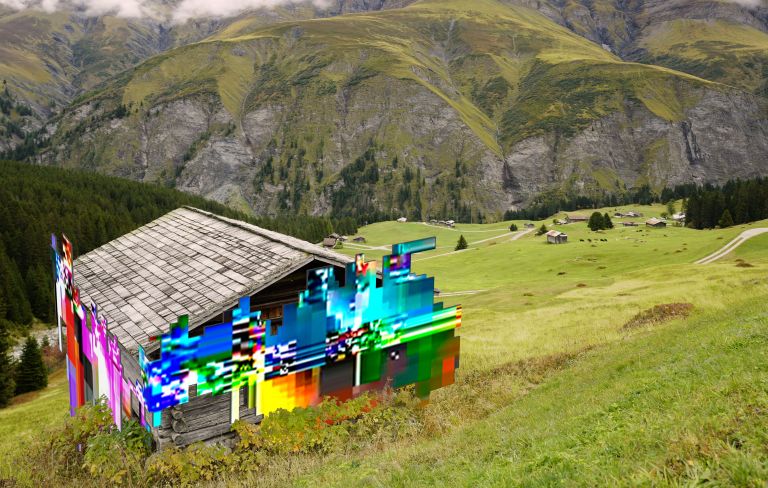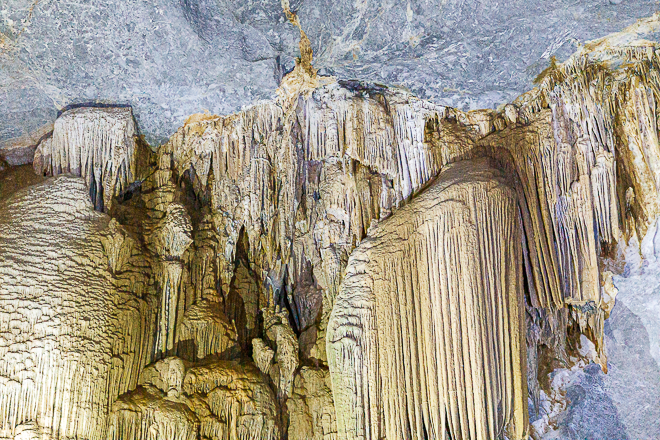Katharina Grosse’s paintings can appear anywhere: on a rubber boot, on an egg, on the crumpled folds of a cloth, along a railway line, on the beach, in snow, on a sculptural form, or across a façade and on the roof. Her large-scale works are multi-dimensional pictorial worlds in which splendid colours sweep across walls, ceilings, objects, and even entire buildings and landscapes. Central to Grosse’s artistic practice is this notion that painting takes place not just on canvas, but can also permeate every facet of our surroundings.
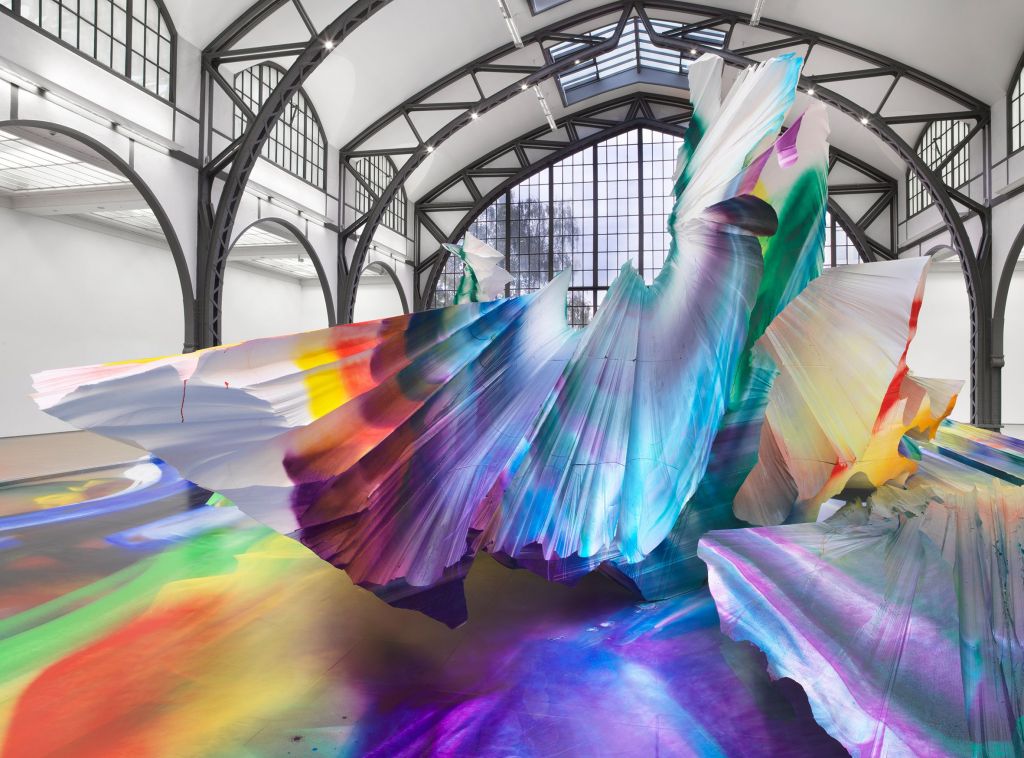
Ausstellungsansicht Hamburger Bahnhof – Museum für Gegenwart – Berlin, 2020; © Katharina Grosse / VG Bild-Kunst, Bonn 2020 / Foto: Jens Ziehe
For the exhibition “Katharina Grosse. It Wasn’t Us” in the “Historische Halle des Hamburger Bahnhof -Museum für Gegenwart” in Berlin, the artist has defied the boundaries of the building with a grand gesture and bright colors: “I paint myself out of the building” is how the artist describes her work on site.
In a process lasting several weeks, a vast new painting has emerged that stretches across the Historic Hall and into public space, over the extensive grounds behind the museum, landing finally on the façade of the so-called Rieckhallen.
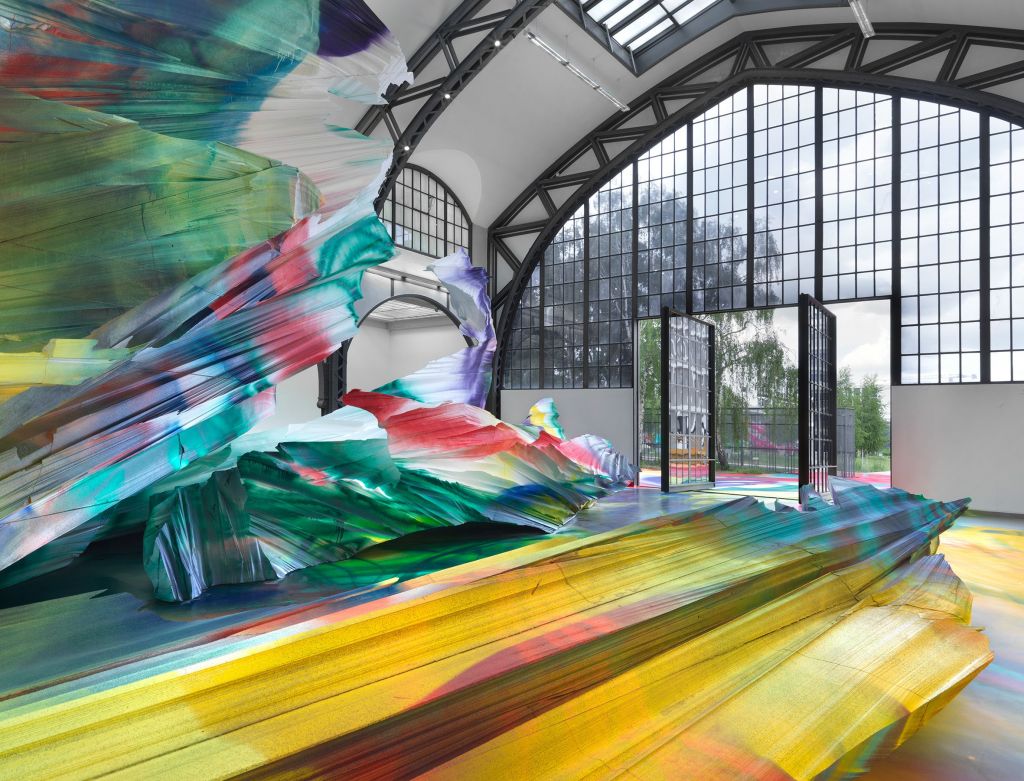
Ausstellungsansicht Hamburger Bahnhof – Museum für Gegenwart – Berlin, 2020 / © Katharina Grosse / VG Bild-Kunst, Bonn 2020 / Foto: Jens Ziehe
Grosse’s kaleidoscopic painting brings together colours and forms, natural and man-made surroundings and its visitors as participants in an all- encompassing, pulsating interaction of hues. As the boundaries between objects and constructed space, and between horizontal and vertical orientations begin to melt away, new spaces emerge that are both artificial and ripe with associations, yet at the same time completely real and wholly abstract, forcing us to renegotiate our habitual ways of seeing, of thinking about, and of perceiving the world around us.
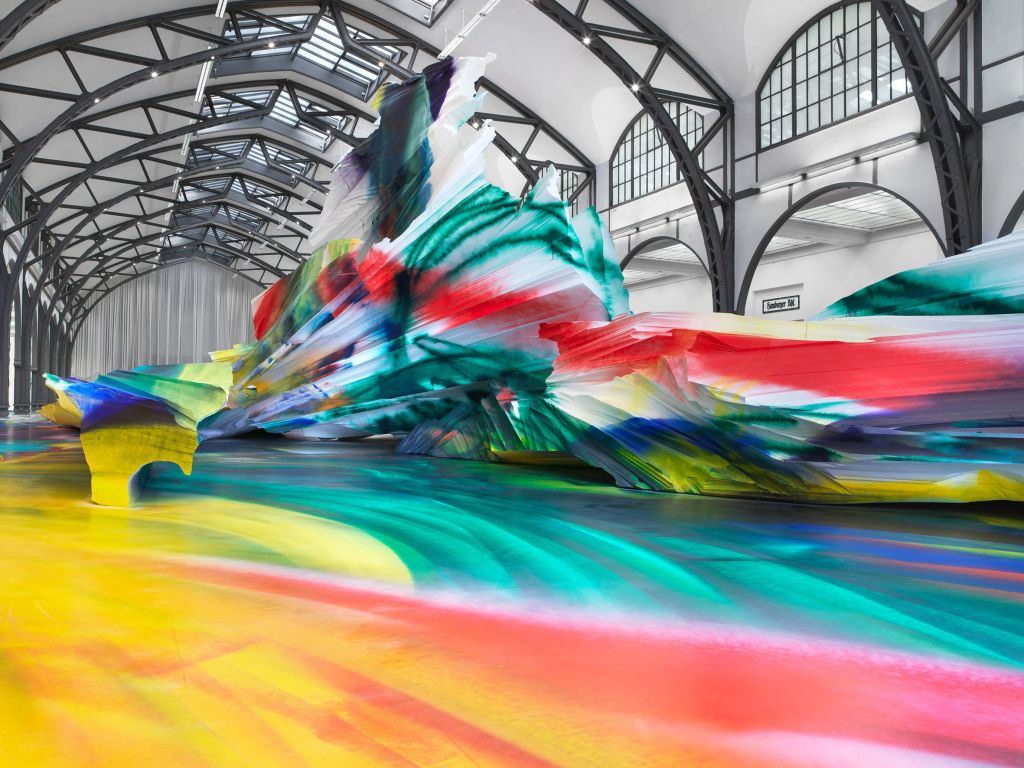
Ausstellungsansicht Hamburger Bahnhof – Museum für Gegenwart – Berlin, 2020; © Katharina Grosse / VG Bild-Kunst, Bonn 2020 / Foto: Jens Ziehe
In the interior space, the painting’s support consists of the floor of the hall and a group of towering forms crafted from polystyrene. Grosse transposed these sculptural elements into their final size via a multi- stage working process involving incremental changes of scale and assembled by a team of workers in the hall.
This painting process, in which the colours react differently depending on the surfaces they encounter and how densely they are sprayed, was continued outside. While the section of the painting located indoors is influenced by the architectural elements of the space and the ever-changing light conditions throughout the day and during the different seasons, the outdoor sections interact with the trees and greenery, the weather conditions and the day-to-day life of the square.
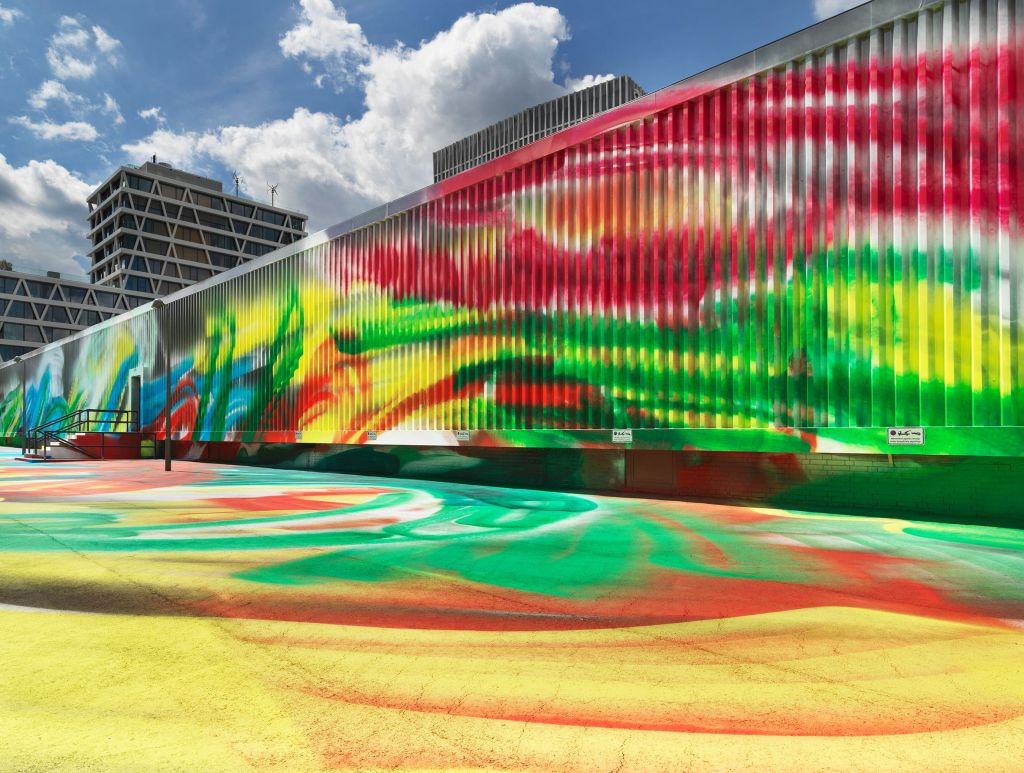
Ausstellungsansicht Hamburger Bahnhof – Museum für Gegenwart – Berlin, 2020; © Katharina Grosse / VG Bild-Kunst, Bonn 2020 / Foto: Jens Ziehe
The exhibition showcases an in situ-painting that stretches seamlessly across indoor and outdoor space is the largest such work by the artist in Europe to date.
All information for visiting the exhibition in Berlin can be found here.
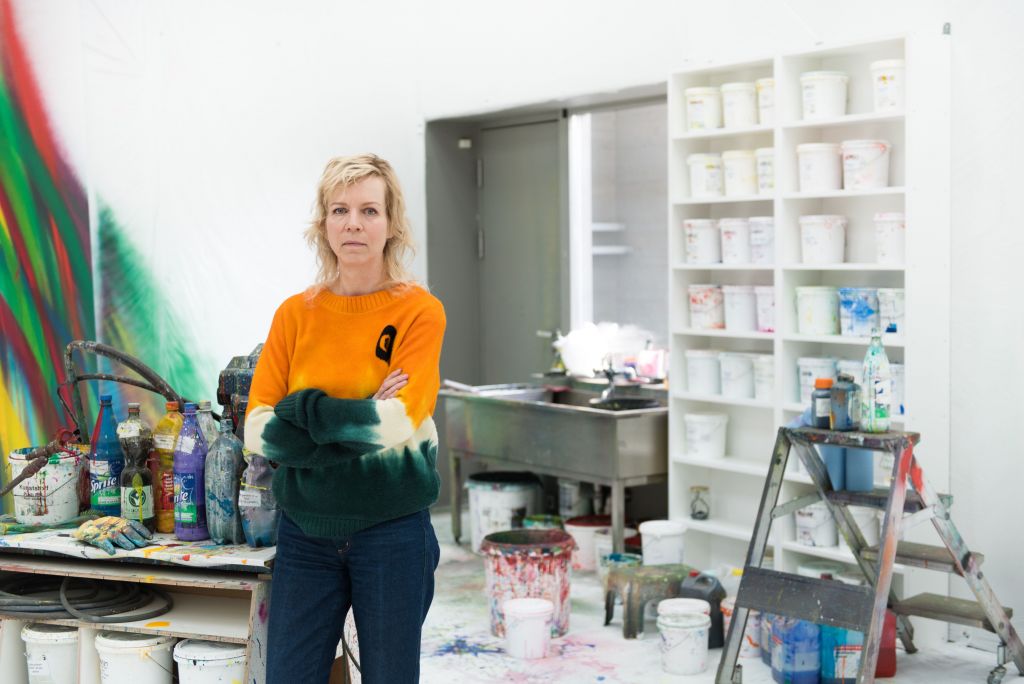
Portrait Katharina Grosse; Foto: Robert Schittko, Art/Beats
